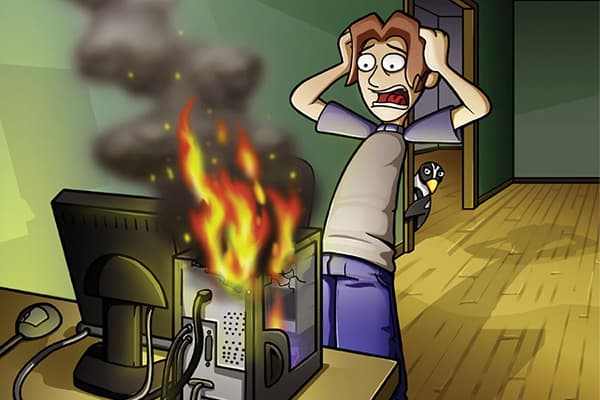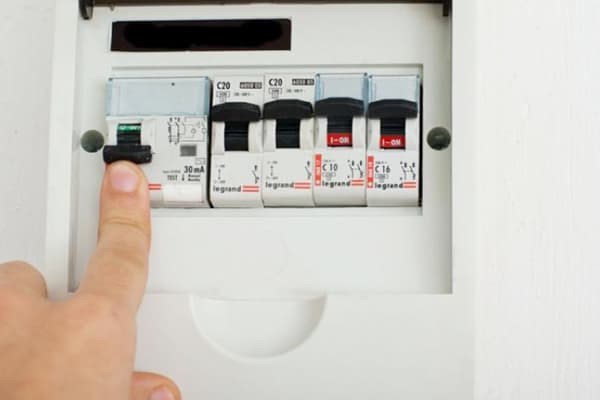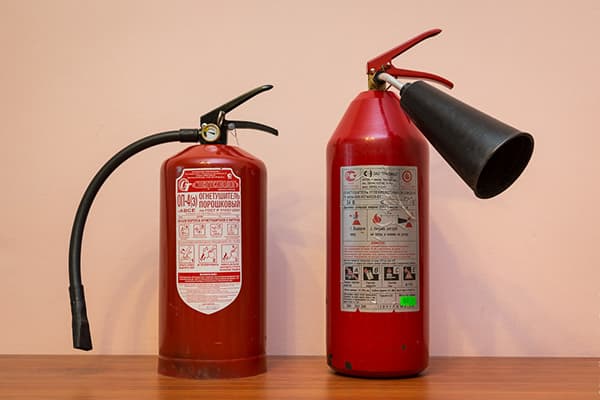Basic common sense: why can’t you extinguish electrical appliances with water?
Firefighters and electricians unanimously say: extinguishing electrical appliances with water is strictly prohibited! This is due to water's ability to conduct electricity, which creates a risk of electric shock. There are other ways to extinguish burning wiring and electrical appliances. Let's figure out how to properly act in case of fires caused by a short circuit.

What happens if you pour water on a burning appliance?
Fire is a fast-spreading disaster that requires swift action when it occurs. But haste and stress often lead to rash and impulsive actions - a person grabs the first container of water he comes across (a vase of flowers, a bottle of drinking water, a mug of tea) and pours it onto the burning electrical wiring. Such an action will instantly lead to the most dire consequences.
From the physics course we know that water (in most cases) is a solution of various salts. These salts are in solution in the form of charged particles - ions. The presence of ions makes water (as well as tea, coffee, and various water-based liquids) an electrolyte - a substance that conducts electric current.
Water entering the combustion zone will cause the following consequences:
- In the short time that the jet connects the hands of the person engaged in extinguishing the fire and the wires exposed by the fire, the current can cause electrical injury that is dangerous to life and health.The risk increases if the container is made of conductive materials (for example, metal), your hands are wet, etc.
- Once inside the device, water will spread through the wires, causing more and more short circuits, which increases the risk of complete failure of the entire system. So, by pouring water on a fire-switched distribution cabinet, an inexperienced firefighter will destroy those devices that have not yet been damaged by the flame.
That is why it is allowed to extinguish with water only those electrical appliances that are reliably known to be de-energized.
If an electrical appliance that caught fire was flooded with water, disconnected from the network only by equipment (switches, circuit breakers, etc.), but not physically disconnected from it, there is a risk of current bypassing through the flooded areas. Then some parts of the device may unexpectedly become energized.
Correct actions in case of fire
First of all, it is necessary to take all measures to turn off the power to burning electrical appliances. You can do this in several ways:
- Unplug the device from the socket. This is only permitted if the flame does not damage the insulation on the plug, socket, or nearby sections of the wire.
- Turn off the circuit breaker that feeds the line (or the switch that supplies electricity to the room where the fire occurred).
- Use an ax to cut the cable or wire that supplies electricity to the burning appliance.
Please note that the device may be connected to a UPS or backup power source. Then it will remain energized even after the main line is turned off.
If for some reason it is impossible to de-energize the line on which the fire occurred, they begin to extinguish the fire with means that do not conduct current. If necessary, evacuation and notification of the fire service are also carried out.
How to extinguish electrical appliances and wiring?
There are several safe ways to extinguish burning wiring or electrical devices:
- Filling the fire with sand. The main thing is that the material is not wet.
- Use of powder fire extinguishers. This product is safe for extinguishing devices powered by voltages up to 1 kV.
- Carbon dioxide fire extinguishers of the OU series extinguish fires in installations powered by voltages from 1 to 10 kV.
Extinguishing fires with carbon dioxide poses additional hazards. First of all, carbon dioxide creates a large amount of non-flammable gases (carbon dioxide, carbon monoxide). These products are poisonous to humans and are deadly in large concentrations. Therefore, only fires located in large rooms can be extinguished with such a fire extinguisher.
To minimize the risk of electric shock, you need to stand so that there is at least 3 m of space between the fire extinguisher nozzle and the fireplace. When extinguishing a device powered by a voltage of up to 1 kV, the safe distance is 1 m.
In addition, when released, carbon dioxide instantly cools. Therefore, if the jet comes into contact with the skin, there is a risk of frostbite. Holding the fire extinguisher nozzle with your bare hand is also unsafe.
Extinguishing electrical wiring, power lines, electrical appliances and installations with water, foam and water-foam compositions is strictly prohibited!
Fighting fires is a process that requires highly trained skills and a calm head. To be sure of the safety of your home, purchase a safe fire extinguisher (class “E”) in advance and teach all family members how to use it.

